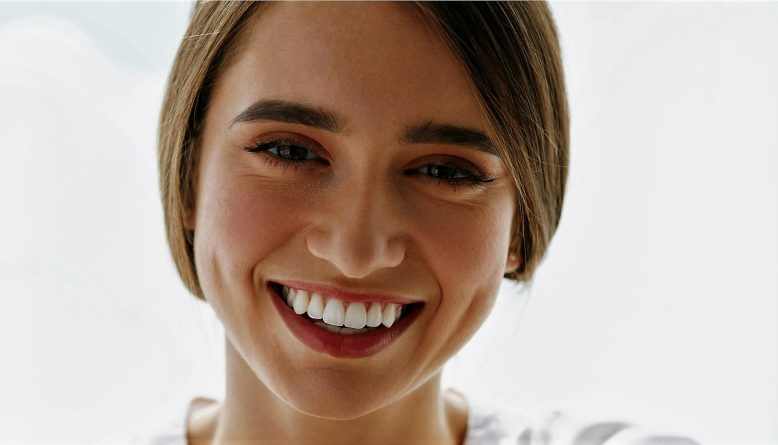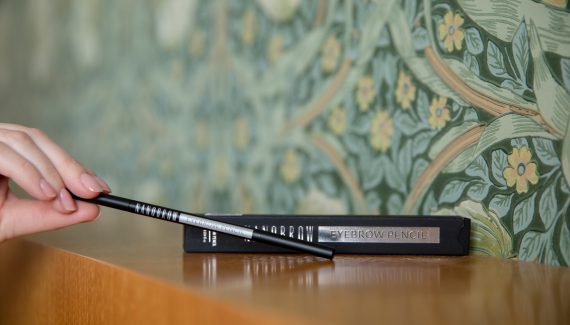Skin imperfections may appear on our face no matter if we are 20, 30 or 40. There are plenty of reasons why these develop, as there are numerous ways to hide our skin flaws (eczema, broken capillaries, dark circles under eyes, red marks). I devote this entry to describing camouflage make-up technique in the most detailed way I only can.
It’s definitely more difficult to make your face flawlessly beautiful and clean than it is described in many colour magazines. Without a good concealer at our disposal, we won’t be able to hide skin imperfections which may take you aback in the least expected moment. Which concealer to choose?
Before I start exploring this topic further, I would like to tell you a little bit more about the common facial skin flaws.
Unfortunately, in some cases it doesn’t matter if we spend either 15 minutes or long hours on beauty treatments every day. Deterioration of our face skin condition can result from many other factors than our ignorance in terms of skin care, and these are diseases, stress, seasons change or many other factors. This poor condition of skin reveals itself with the discussed imperfections that include: pimples, blackheads, discolorations, broken capillaries, bruising and any other marks.
Each skin imperfection is mostly an aesthetic problem although it may also signalise serious dermatological problems. Of course, I would like to encourage you to check this out.
You might find MAP OF FACE very useful in this case (just type this phrase into the internet browser engine, you will see many of them), thanks to which you can find out what problem can be signalised by skin lesions appearing in a particular face area. To demonstrate, eczema occurring on our chin may indicate hormonal problems. Naturally, if you want to be certain what is hidden behind the signals your face is giving you, consult a physician. It’s worth realizing that face mirrors the state of our entire body.
Where do skin imperfections come from? The most frequent causes are:
- overuse of mattifying and dehydrating cosmetics;
- using the same towel to dry face and other body parts;
- imprecise face cleansing, e.g. make-up removal done in a tearing hurry;
- application of mismatching in terms of skin needs products, application of too heavy cosmetics;
- body dehydration and shortage of vitamin B;
- hormonal changes (pregnancy, menstruation, menopause, puberty);
- very fatty, stodgy and unhealthy diet;
- and many, many other mistakes we made in face body care.
Ok, since we know more about where skin imperfections come form, we can move forward to the next part of this entry devoted to the ways of hiding the flaws. However, in my opinion, it is more important to eliminate all skin flaws than camouflage them. For that reason, it’s better to introduce into our diet food products rich in nutrients and drink a lot of water. Moreover, I suggest you to scan your make-up bag and throw away all the products which can overburden and irritate our skin, especially those products which best-before date has expired. To conclude, positive changes introduced into your diet and daily face care are the easiest way to get rid of skin imperfections.
Bear in mind one thing! Pimples, discolorations and other skin imperfections won’t disappear overnight. The best solution in this situation is applying CAMOUFLAGE MAKE-UP. Be patient and equip yourself with a good face concealer. This is a cosmetic which will help you minimise visibility of the skin imperfections.
At the beginning, we need to find the right cosmetic because a good face concealer is able to mask skin imperfections that are really obvious to notice. Camouflage requires proper tools to make use of. Actually, the type of concealer we use depends on the sort of skin imperfections we want to deal with. Such cosmetics vary in terms of the cover strength, to name just one quality.
- Stick concealer is highly pigmented and delivers strong coverage.
- Cream concealer is less dense, is equally good at hiding imperfections and moisturises.
- Pencil concealer is recommended to topical masking.
- Pressed concealer is dry and serves well at hiding pigmentation marks.
- Liquid concealer is characterised by delivering medium coverage, it’s lighter so it is perfect for under eye area.
Of course, we can also choose between highlighting and antiseptic concealers. However, despite these important features, it’s the shade of the product that counts. A good concealers are categorised into colours because this is strictly connected with the scheme of contrasting colours. To clarify, each colour (e.g. red pimple) has its contrasting shade, which neutralizes it. And this is why colour concealers are so effective when it comes to camouflaging make-up. Exploring the issue further:
- green or olive concealer: for redness and broken capillaries;
- yellow concealer a tone brighter than the foundation: for dark under eye circles;
- peach or salmon pink concealer: for purple and blue bruises;
- red concealer: for very strong dark circles under eyes and discolorations.
Being led by these two indicators – colour of a concealer and formula – you can select a perfect cosmetic for yourself. In the case of really considerable in size and dark skin lesions, I recommend you to use concealers designed for professional make-up. Their lifespan is better as the coverage is stronger, yet they are also heavier for our skin. You have to be cautious while applying them.
How to hide skin imperfections using a concealer?
All concealers should be applied using an appropriately flattered brush. Also, you can make use of a sponge or just your fingertips. What is important though, remember to apply concealer in scarce since this prevents so-called mask-like effect, smudging and caking. To be honest, at the beginning of my concealer adventure I used to have the very problem myself because I thought that more equals better. Now I know that it’s better to apply a few thinner layers than one thick.
What should we do when in spite of a well-matching concealer and its scarce amounts, it doesn’t deliver good coverage and tends to gather in creases? The issue here is that the skin might be considerably dehydrated, and the concealer doesn’t want to melt with the face. To deal with this problem I suggest using a moisturising mist, a special eye make-up primer, light oil or a cream featuring a high concentration of nourishing substances. Of course, these products are to be applied before concealer.
After applying the concealer to the face part that requires evening, pat it gently and precisely using your fingertip. It must be remembered to make the cosmetic blend with the skin/foundation; we need to make sure that concealer doesn’t leave any obvious lines that stand out. Before putting on a foundation, it’s also worth waiting a while to be sure that the cosmetic ‘clings’ to skin and won’t smudge when we follow with the foundation. The rule, ‘foundation first, concealer second’ is known to everyone, I guess. The only exception concerns under eye concealers that should be applied on the foundation, in general.




Leave a Reply